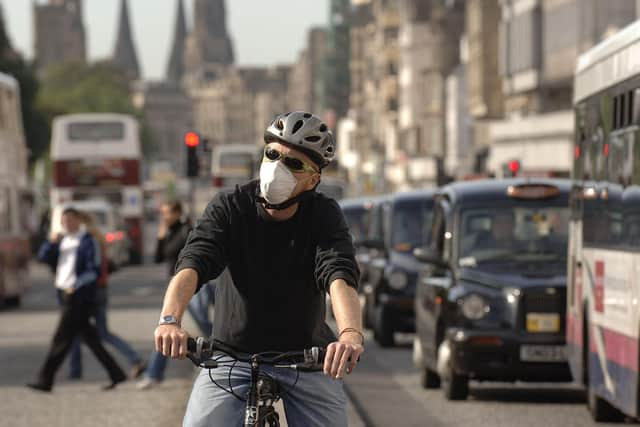On Clean Air Day, Scotland should breathe deep and drive harder to cut pollution - Dr Richard Dixon
In 2020, Scotland met air quality standards for traffic pollution at every monitoring site for the first time since the standards were adopted 20 years ago. According to European law the standard for nitrogen dioxide was supposed to be met in 2005 and the one for particles in 2010.
We only met these standards in 2020 because the Covid lockdowns cut traffic levels massively. Sadly, in 2021 pollution levels increased again and one site slipped back over the standard.
Advertisement
Hide AdAdvertisement
Hide AdOf course, the standards set 20 years ago are out of date and the European Union consulted late last year on revising the standards so they more closely match the health-protection levels recently recommended by the World Health Organisation (WHO).
WHO made almost all of their recommendations tougher than the 2005 set because of stronger evidence on the impact of air pollution on human health.
Whether we also toughen up our standards here in Scotland could be the first big test of the Scottish Government’s pledge to keep up with EU environmental legislation. Although Scotland’s standards are already slightly tougher than the rest of the UK, an attempt at a major revision could also be a test of whether the UK government will use Brexit powers to stop Scotland setting tougher standards.


If we went with the new WHO levels most sites that currently pass would fail. The new standard for nitrogen dioxide is for an annual average that is a quarter of the current standard. Of the 93 Scottish sites that reported annual levels in 2021, only one failed the current standard, but 83 exceeded the new WHO recommended levels.
The recommendation for fine particles has been halved. Of the 83 sites that reported levels, all passed the current standard, but 57 exceeded the new level.
It will take some years for the EU to revise its standards and they are likely to be phased in. So it could be a decade before the new standards become legal requirements. Of course, your lungs aren’t aware of these legal niceties and a level of pollution which will be legally defined as bad for you in 10 years’ time is also bad for you today.
Baroness Jenny Jones, a Green peer in the House of Lords and ex-deputy Mayor of London, last month introduced a proposed clean air bill which would introduce a right to clean air and require air quality to meet the new WHO levels. The bill is known as the Ella’s Law Bill after nine-year old Ella Kissi-Debrah, who, in 2013, was the first person in the UK to be ruled by a coroner to have been killed by air pollution.
The current targets have led to strategies, Low Emission Zones, more emphasis on electric vehicles and lower emissions from fossil-fuelled vehicles. It is possible that Jenny Jones’ bill has little chance of becoming law but it, and developments in Europe, add to the pressure to do much more. Scotland is well placed to be leading this effort.
Happy Clean Air Day.
Dr Richard Dixon is an environmental campaigner and consultant
Comments
Want to join the conversation? Please or to comment on this article.
